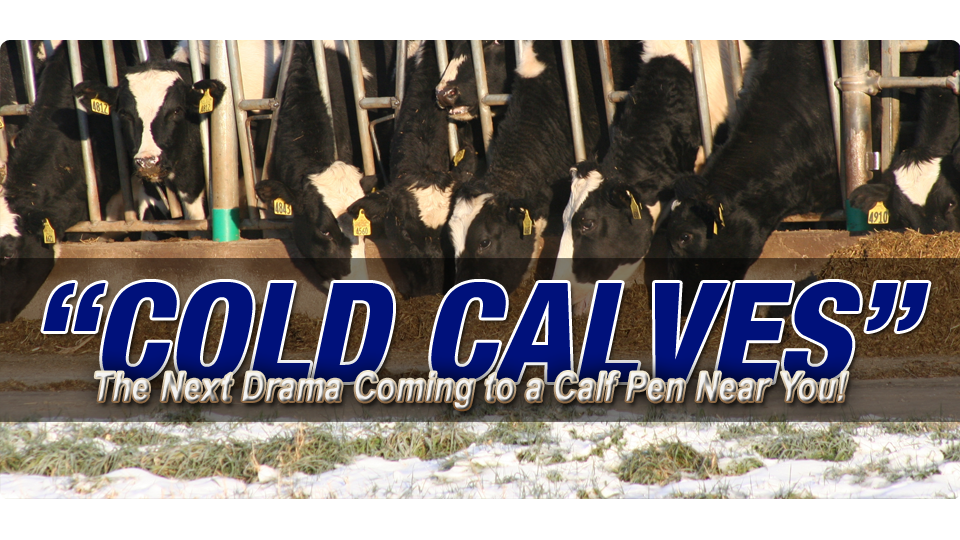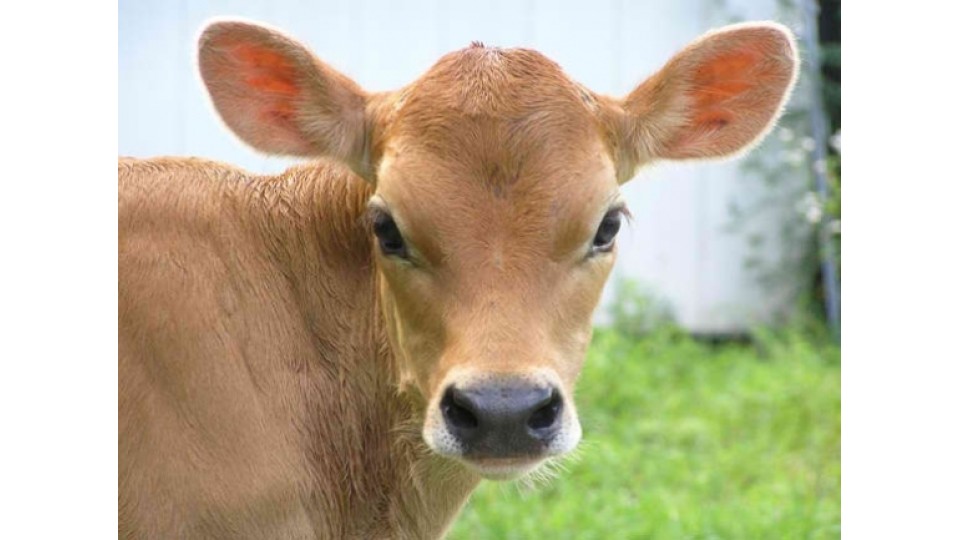Calf Rearing

Did you know?
That nearly 15% of heifers fail to reach first lactation.
A third of heifers will not even reach second lactation.
Heifers calving at 32 months plus on average will only spend 18% of their life producing milk compared to those calved around 22 months which will spend 48% of the time in milk production
Calves are an important product as they can potentially be your next generation of breeding stock. The key to a good start is colostrum management. The first 6 weeks of life is the most important, especially if your heifers are going in to the milking herd. This 6 weeks can influence her production for 2 years down the line.
There are many types of rearing systems currently on the market, some more expensive than others and some more labour intensive than others, but the system you choose has to be the right one for you and your staff. The most common system used is twice a day feeding using a bucket or teat, this system can be highly labour intensive. Computerised feeders are becoming a lot more common for feeding calves as they are less labour intensive. Calves should be putting on between 0.7-0.9 kg a day depending on breed.
"Healthy calves, healthy profits"
Twice a day feeding
|
Positives |
Negatives |
|
Bucket fed or teat |
Labour intensive |
|
Controlled amount |
Have to be fed at same time each day |
|
Can see what has drunk |
Calf growth limited |
|
Can adapt to surplus milk |
|
|
High stockmanship / observation |
|
Once a day feeding
|
Positives |
Negatives |
|
Not dependant on power |
Observation |
|
Less washing up |
Need to be fed at same time |
|
Faster uptake of concentrates |
|
|
Less labour intensive |
|
|
|
|
Ad lib feeding
|
Positives |
Negatives |
|---|---|
|
Feed cold or warm milk |
Some may not feed or be pushed out |
|
Lower labour & equipment costs |
Not getting the quantity needed |
|
Faster growth rates |
Less observation |
|
|
Hygiene |
|
|
|
Automatic machine feeding
|
Positives |
Negatives |
|---|---|
|
Access to milk 24/7 |
Hardly any observation |
|
Low labour costs |
Hygiene standards |
|
Improved growth rates |
Buildings should have good drainage as production of urine is 10% higher |
|
Flexible |
Equipment costs and setup |
|
|
|
Computerised feeding
|
Positives |
Negatives |
|---|---|
|
Low labour costs |
Nearly no observation |
|
Ad lib system |
High capital costs |
|
Records calves daily intake |
Equipment costs / servicing |
|
Pre-set programs |
Hygiene |
|
|
|
As well as feeding, housing plays a vital part in the success of a calf as this is where they will spend most of their time. The set up you choose has to be right for you and your staff and fit around your routine.
There are many different types of housing available on the market. But you need to consider the money and space you have available to be able to expand or modify your current system.
You need to consider space for your new born calves, weaned calves, how long you’re going to keep calves in individual pens before moving in to group feeding etc. For individual feeding you have the option of pens or hutches. Both systems have their pros and cons but at the end of the day it’s what’s best for you. Ideally a calf of up to 4 weeks old needs 1.1msq and up to 8 weeks requires 1.8msq. If you’re considering individual pens, whether it be one sided or two, allow a passage of 1.2m. If using hutches then allow two together then leave a metre gap between next lots. For calves in groups, those up to 8 weeks of age require 1.8msq each and grouped calves up to the age of 12 weeks require 2.5msq each.
To provide the right environment for your calves, your building should be well ventilated, drained, and free from airborne disease. It should also be light and airy and free from dust, draughts and damp. A simple smoke test can be done to see how well ventilated your buildings are. The effect of having poorly set out and ventilated buildings can be horrific on your calves health, causing problems such a pneumonia, which can have a knock on effect of future development.
Drainage is important within your shed as soggy bedding can lead to problems in calves such a naval infections. It’s best to have a small slope on your pens to help with drainage. Make sure calves get bedded up every day with clean fresh straw and adding a disinfectant powder to the routine every other day will help to absorb and decrease infection.
Things to consider within your building are; water, electric, lighting & access. Calves should always have access to clean water 24/7, water is also important for the cleaning and disinfection process required once calves are moved out. Electricity should be accessible at all times in case heat lamps are required. Controlled lighting is good tool to have in your buildings as well as having plenty of natural light flooding in. It’s very important to have safe working access i.e. for mucking out, loading cattle etc.
Every system is unique as each system can be managed differently. The key to calf rearing is giving the calf the best chance of survival and not putting them at harm and to be able to come out with a profit at the end of rearing whether it be for dairy or beef production.
You need to focus on the first 6 weeks of life as this is the most vital stage of a calf’s life, especially for dairy production. If you skimp in these vital weeks then expect problems in two years’ time with milk production, fertility, calving and death. Everything needs to be taken in to consideration at rearing but it all starts with colostrum.
To further increase calf growth rates when the temperatures are low, calf jackets are advisable as these allow the calves to spend more of their energy on growth and less on keeping warm!
"Colostrum is the key to success"
Remember the 4Q's; Quality, Quantity, Quickly, Quietly.
Quality-
Factors including the age of the cow, the amount given from milk and the breed can vastly decrease the quality of colostrum be given to the offspring
Quantity –
Ideally a calf needs 4 litres of colostrum within the first 6 hours of birth as this is when gut absorption is at its highest.
Quickly-
You ideally need to feed the offspring as soon as it’s born but within 6 hours as the gut starts to close. Delaying this stage can delay the development of the calf meaning it takes longer for it to grow and reach full potential.
Quietly-
Calves which are stressed require more colostrum compared to those which are calm as they can make better use of the antibodies within the colostrum.
It’s best to feed the calf yourself as you then know how much has been fed and when. For a calf to receive just 3 litres of colostrum it should be suckling on the mother for 20 minutes consecutively and should be watched, which in reality is highly labour intensive.
Ideally colostrum needs to be tested before feeding to estimate the quality you’re feeding to the calf. If a cow produces over 8 litres of colostrum in the first milking it’s going to be weak and will need topping up with a pure dried full fat colostrum powder.
To estimate the quality of colostrum it is worth the money to purchase a colostrometer, to help you value your colostrum more and see what quality you’re feeding.
A colostrometer uses a traffic light system on the stem which measures the density of the colostrum. Ideally the colostrum should be a little bit cooler when you test.
The traffic lights indicate the quality
Green – outstanding we should aim to get all colostrum to this standard as it’s the best to feed to calves and needs no extra top up. This is best being fed to your heifers and breeding stock.
Yellow – still a good quality of colostrum but ideally should be topped up with a full fat colostrum powder. If topped up is good to feed to your heifers but mainly a lot of people will feed this to the bull calves
Red- best to be discarded as it has no value. It can be fed to bull calves but storing this colostrum isn’t recommended.
If you’re collecting colostrum from the milking parlour, ideally you should deal with it as soon as possible as every 20 minutes that the colostrum is left the bacteria multiplies.
Colostrum is really easy to store and it is worth saving, especially the best quality surplus left over. If you’re considering storing colostrum there are two options:
Fridge – here colostrum can be stored for up to 6 days but if you’re going to do it this way pasteurisation is recommended.
Freezer – this is probably the best option for colostrum as it can be stored for up to 6 months and is handy whenever it’s needed. When thawing colostrum, ensure that the temperature doesn’t exceed 60℃ as this cad start to denature the antibodies in the colostrum.
At G Shepherd Animal Health we sell a range of products for colostrum management. Suggested products for correct colostrum management include – a colostrometer, perfect udder bags, a bag thawing element and colostrum replacer.
The perfect udders are easy to fill and store in the fridge or freezer and be easily thawed out in half an hour using our thawing element and fed to a calf using the attachable teat or tube supplied with the bag.
It is worth using the perfect udder bags in your system as these bags are only made for one use so this cuts down the spread of bacteria and also means less washing up of equipment at the end.
If your breeding calves for export or embryo transfer, then it would be worth looking at our IBR elite formula (which is IBR, EBL and Johnes free) in a perfect udder bag which you simply fill with warm water, shake and feed to the calf with either the teat or tube provided we also do a similar perfect udder bag which is EBL and Johnes free.
Once a calf has had its colostrum, within 2 days of age it should be on milk from the parlour. Most people will feed antibiotic milk from the parlour for about 7 days. The problem with that is you’re passing on things such as Johnes disease in to your calves. The best way to sort this is to buy a pasteuriser and pasteurise milk at 60oC for 60 minutes. By doing this you’ll be benefiting your future progeny. Calves can be on pasteurised milk for as long as you like but it is good to introduce a milk replacer at about 1week - 1 month old, every farm is different.
I hope this has helped any of your queries on calf rearing but if you still have further questions that need answering feel free to contact our team which will be able to help you.
Click here for more calf related research.


